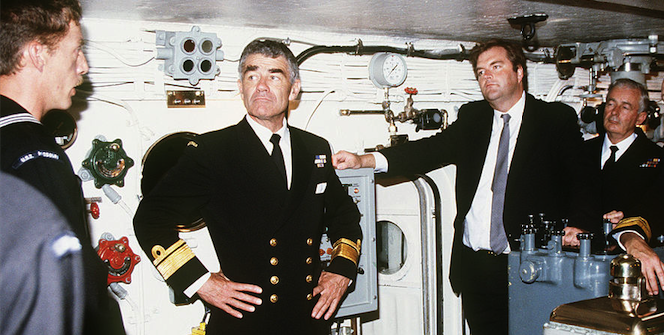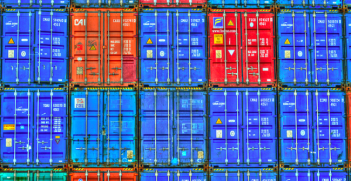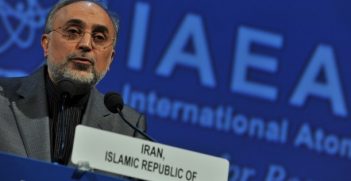Defence White Paper 2016: A Throwback to a Harder Era

The 2016 Defence White Paper is a first class statement on Australia’s strategic situation. It proffers a balanced view of the significance of Australia’s alliances and ably inserts their defence in the context of broader regional and global politics.
A force structure emerges that’s affordable and well-pitched to an understanding of the need for an Australian technological edge in a strategic zone to the north of Australia—an area which is witnessing a surge in military capability (and capacity for force projection) at a faster rate than anywhere else. The DWP contains an industry policy which slams into reverse a 20-year drift towards off-the-shelf equipment acquisition. Nowhere is the term ‘self-reliance’ used but we have a defence industry policy that adopts the rationale and content of the industry section of the 1987 White Paper. The rationale then was self-reliance; optimising the ability to build and sustain as many of our platforms as possible. One has a sneaking suspicion we owe this excellent revival to the voters of South Australia.
As a defence statement it has some flaws, which are best encapsulated in paragraphs 3.10 and 3.11:
‘To ensure Defence has the necessary force structure and force posture to defend and further Australia’s Strategic Defence Interests, the Government has agreed to three equally-weighted high-level Strategic Defence Objectives to guide the development of the future force set out in this White Paper. The Strategic Defence Objectives outline the activities the Government expects Defence to be able to conduct if the Government decides to use military power in support of Australia’s Strategic Defence Interests.’
3.11 defines the Strategic Defence Objectives:
- ‘Deter, deny and defeat attacks on or threats to Australia and its national interests, and northern approaches.
- Make effective military contributions to support the security of maritime South East Asia and support the governments of Papua New Guinea, Timor-Leste and of Pacific Island Countries to build and strengthen their security.
- Contribute military capabilities to coalition operations that support Australia’s interests in a rules-based global order.’
All three are indeed important defence objectives and have been pursued on a bipartisan basis by Australian governments since before the Cold War ended. But they’ve not been pursued as coequal determinants of the force structure. That’s because if the government were to do so it would be impossible to prioritise a tight budget. Just about any item of expensive kit could be justified under one of them.
Hitherto the first of the objectives, pursued in the context of an area previously defined as of ‘direct military interest’ to Australia, has been the dominant influence. Forces required for the further objectives have been identified as being drawn from a structure pitched to the first.
There’s no discussion of military strategy in the 2016 DWP. With a focus on the first strategic objective this strategy would be defence in depth or layered defence. There’s no detailed assessment of most likely threats and concepts of warning time. There’s no clear differentiation in development of capability on what belongs in the ‘force in being’ and what is placed as part of an ‘expansion base’ activated in a shift to a high-threat environment.
Pursuing such detailed analysis of course becomes highly contentious. It’s possible some of it is canvassed in the classified version and in scenario-based planning in the department. Past papers have seen fit to canvass these issues in public. It’s possible that exercising this discipline might be seen by the government to be a throwback to an unacceptable past. What had then been a long standing preference for a force structure based on expeditionary activities was replaced by a determination, in the first instance, to defend Australia’s approaches. If the spending in the 2016 White Paper gets into trouble down the track, the best defence will be found in planning for an uncertain region.
The 2016 DWP is saved by a number of factors. It offers a sophisticated enunciation of the multitude of problems Australia confronts globally. It takes a welcome step in prioritising the shifting threat environment into new spheres of cyber and space. It positions us well on the areas of force structure and industry policy for Australia-US collaboration on the technologies entailed in their so-called third offset strategy. Broadly, the 2016 document is strong on allied collaboration.
Above all the actual force structure which emerges, particularly big ticket items for the RAAF, together with submarines and with facilities in the north, conforms to the first strategic defence objective. It ends up in major ways being the defence of Australia document you get when you dare not speak its name. The return to a self-reliant industry policy is at the heart of this. The arguments on sustainment, innovation and enhanced workforce skills are all a throwback to a harder era and are very welcome.
The Hon Kim Beazley AC FAIIA commenced as National President of the Australian Institute of International Affairs on 1 March. This article was originally published by ASPI, where he is a distinguished fellow. It is republished with permission.





